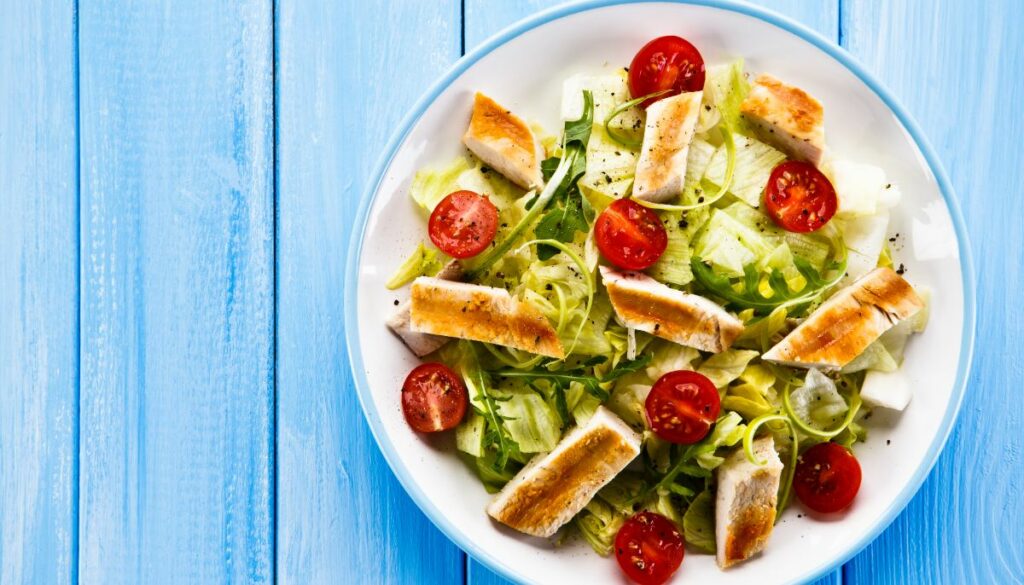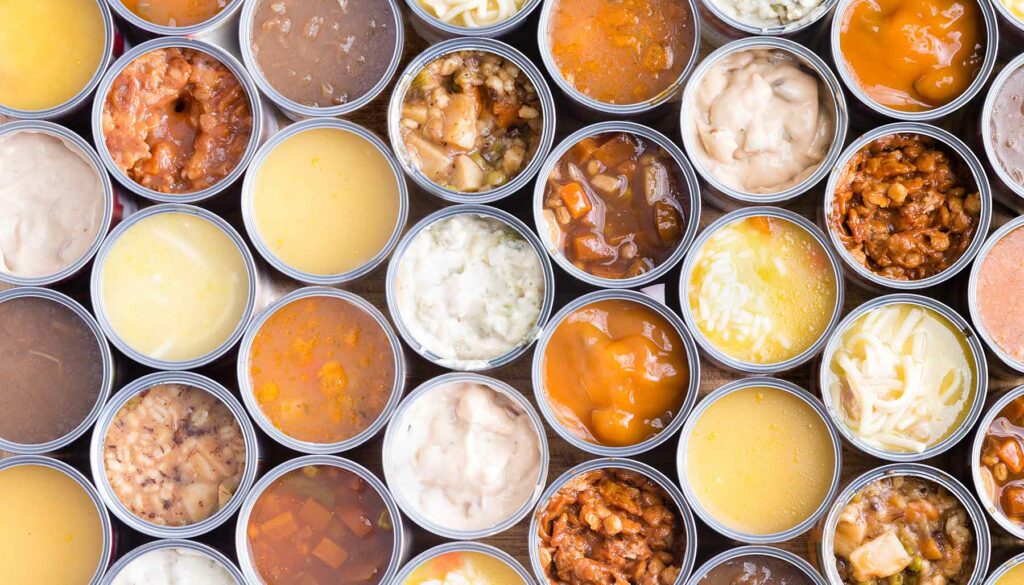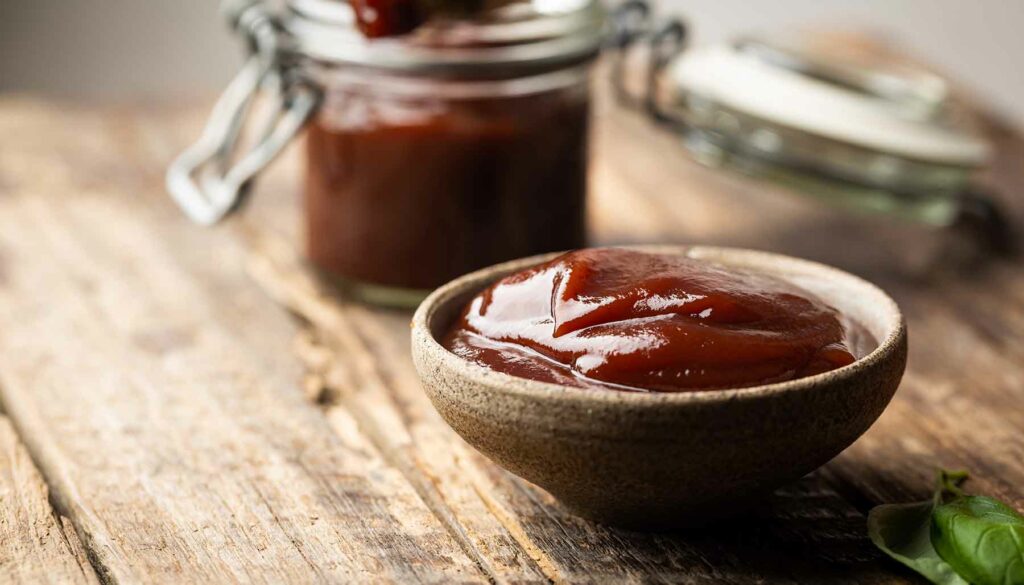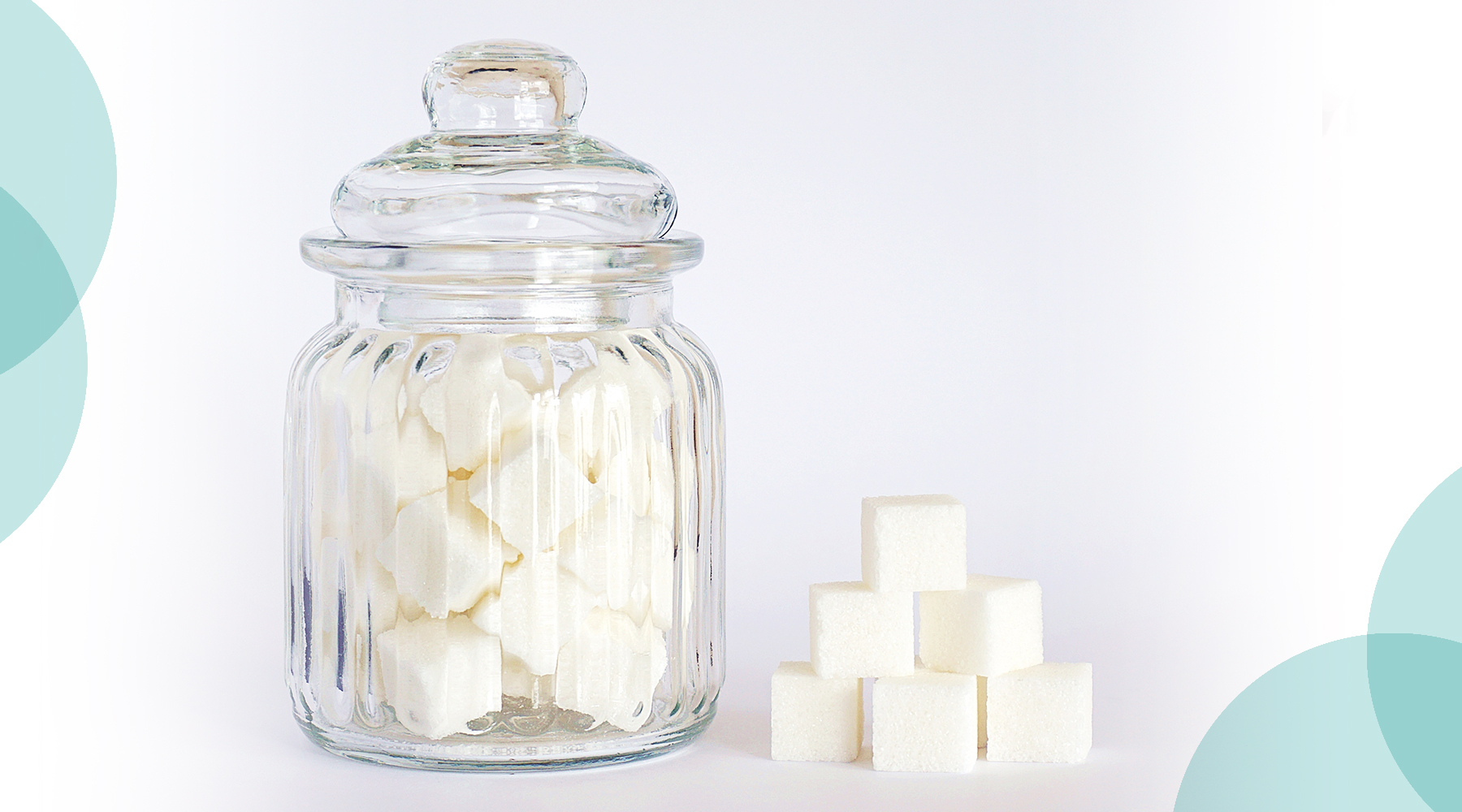I know I’m not alone when I say that my tastebuds love sugar.

I mean, how can you not love sugar? It’s so good. And it’s also so not good for our health. But like just about everything else in life, we should enjoy it in moderation. And when it comes to sugar, we should be moderating just a little more than, say, vegetables.
That’s because sugar can actually harm us if we have too much of it. Dental problems aside, having too much sugar is linked to an increased risk of many diseases: heart disease, obesity, type 2 diabetes, and even cancer.
Unfortunately for anyone trying to eat healthier, there are a lot of foods that contain hidden sugar. It’s starting to feel like there is sugar in just about any frozen, canned, or boxed food at the grocery store. If it isn’t a whole, fresh head of broccoli, there are probably added sugars in it.
Here are some common foods that probably contain more sugar than you think!
Salad Dressing

Although salads are traditionally thought of as a healthy dish, I have certainly seen some unhealthy salads! So what turns all that lettuce into an unhealthy bite? Many salad dressings are loaded down with hidden sugar.
Sweet types of dressings, such as honey mustard or raspberry vinaigrette, are among the worst offenders here. But don’t be fooled by low-fat options, either. In terms of sugar, they definitely aren’t any better. In fact, they are often high in sugars, to make up for the missing fats.
With store-bought dressings, always check the label and limit the amount of dressing you add to your salads.
Pasta Sauce
Pasta sauces, like marinara or alfredo sauce, are savory, so why are they on this list? Because even with names like “Garlic and Herb,” these premade sauces come with plenty of hidden sugar. Sneaky, right?
You might assume that the creamy alfredo sauce might have more sugar than hearty tomato sauce, but the opposite is true. Tomato sauce gets some natural sugar from the tomatoes used to create the sauce, but sugar is also added to the jarred stuff to help balance out the acidity of the tomatoes. You’ll also usually find a high sodium level in premade sauces, and sugar is used to balance that, too.
Granola
While some granola can be healthy, not all of it is created equal. A lot of the premade granola that you find on store shelves is less healthy than you think. They still provide you with fiber and iron, with nuts and seeds giving you protein and unsaturated fats. But all that comes with a fair amount of hidden sugar lurking around, too.
The trickiest part about granola is that the sugar isn’t always going to appear on the label as something you recognize, like “sugar” or even “high-fructose corn syrup.” Instead, companies are trying to hide the sweeteners behind healthier-sounding names that don’t usually raise red flags. Watch out for ingredients like brown rice syrup, oat syrup solids, molasses, or evaporated cane juice.
Granola Bars and Cereal Bars
Regular granola is hiding sugar, so you can probably guess that granola bars are, too. These convenient foods still boast oats and nuts, but they are then mixed with sweeteners – and sometimes, even ingredients like chocolate chips.
As for cereal bars, it’s best not to grab one of these for breakfast, either. They are pretty much just glorified candy bars. They’re usually pretty low on protein and fiber, while also being loaded down with added sugar. Instead of starting your day on the right foot, these will just lead to a sugar crash before lunchtime even arrives.
Premade Soup

Campbell’s might come for me later, but I’m here to tell you not to buy that canned soup. No, not even for your traditional Thanksgiving green bean casserole.
We don’t normally associate soups with sugar. But the commercially-produced varieties are often packed with added sugar, regardless of how savory or salty they taste. How much sugar they contain depends on the kind of soup and the company, of course. Usually, though, a single can of soup could contain nearly all of your daily sugar intake.
Just one can of Campbell’s tomato soup contains 12 grams of sugar. That’s more sugar than an Original Glazed Donut from Krispy Kreme. Yikes!
Coleslaw
Coleslaw is a potluck favorite, especially in the summer. It’s also often a “healthier” side at fast-food and fast-casual restaurants. Look at all that cabbage, and it’s hanging out with all those carrots! Perhaps it’s healthier than the fried chicken sandwich on the menu, but that doesn’t really make it healthy.
I certainly never assumed there was sugar in coleslaw until the first time I made it myself. And to be honest, I felt like I was putting a lot of sugar in there while following a recipe. And if you’re not making it from scratch at home, I hate to tell you there’s even more sugar in it. All the premade coleslaw that you pick up at a grocery store, the slaw at fast food joints, and even the coleslaw at regular restaurants are all loaded with tons of added sugar.
Canned Fruit
We all know that fruit already contains natural sugars, so that’s certainly not a hidden source. However, fresh fruits also contain other nutrients, like important vitamins and fiber. When that fruit is canned, though, it loses some of those important nutrients and gains a lot more sugar.
Canned fruits, and even those little plastic fruit cups, are filled with fruits preserved in sugar-heavy syrup. Even if you opt for fruit packed in juice, that juice is still loaded with extra sugar. Plus, processing strips fruits of fiber, and the canning process can also destroy vitamin C – which is heat-sensitive.
Ketchup and Other Condiments

I have a weak spot for condiments, but I’m trying to use fewer premade ones. That’s because these saucy additions are usually loaded with hidden sugars, even when they’re savory! From ketchup to barbecue sauce, teriyaki sauce, and even relish, these are all unexpected sources of sugar.
For example, a tablespoon of ketchup can contain up to a teaspoon of sugar. Now, show me someone who only uses a single tablespoon of ketchup! As for relish, it has even more sugar than ketchup, and barbecue sauce tops them both with nearly 1.5 teaspoons of sugar per tablespoon.
Baked Beans
I love baked beans so much, but chowing down on them comes at a price. They are savory, a little bit tangy, sometimes spicy, and there’s definitely a sweetness to them. That sweetness comes from a ton of added sugar, unfortunately. And it doesn’t matter if you make them from scratch at home or you buy premade baked beans in a can, you’re getting sugar either way.
Baked beans are made with brown sugar and molasses to balance out the other savory and salty ingredients. If you’re buying the premade canned variety, you’ll notice that brown sugar is one of the very first ingredients – which means there’s a lot of it. Just one serving contains 23 grams of sugar, which is nearly half of your recommended daily intake.
Flavored Yogurt
Yogurt sounds like pretty healthy food, but it’s actually loaded with sugar. Sure, it’s got plenty of calcium to promote bone health, it can aid digestion, and it offers plenty of other important nutrients. It’s just that all those benefits don’t outweigh just how much sugar is in every serving.
The average container of flavored yogurt found on most grocery shelves – think Yoplait or Dannon – probably has more sugar than you think. It can even top the sugar content of many desserts. They also often contain other unhealthy stuff, like dyes and artificial flavors. And just like with salad dressings, don’t be fooled by the “healthier” low-fat options, because they usually have even more hidden sugar to make up for the lack of fat.
Instant Oatmeal
Oatmeal is supposed to be a pretty healthy breakfast food. It is a gluten-free grain boasting plenty of healthy fiber, antioxidants, vitamins, and minerals, right?
This is where companies fool you. Regular oats and instant oats are almost identical when it comes to their nutritional profiles, except for one pesky thing: sugar. One package of flavored instant oatmeal contains around 12 grams of sugar, versus a single gram of sugar found in old-fashioned oats.
Breakfast Cereal

I’m not talking about kids’ cereals here, because we all know those are just plain sugar. You might as well eat a slice of cake for breakfast. Instead, I’m talking about those “healthier” breakfast cereals that we adults eat – all those oat, corn, and bran cereals. They’re supposed to be nutritious, heart-healthy, cholesterol-lowering bowls of deliciousness. They really start your day off right.
Except, that’s not the whole truth. A lot of these cold cereals have tons of hidden sugar. You didn’t think bran flakes were really all that sweet and tasty on their own, did you?
While one serving of original Cheerios only contains one gram of sugar, honey nut cheerios jump to 9 grams per serving – which isn’t even a whole cup, by the way. And I can get down with a bowl of Raisin Bran, but this cereal boasts 18 grams of sugar per serving.













